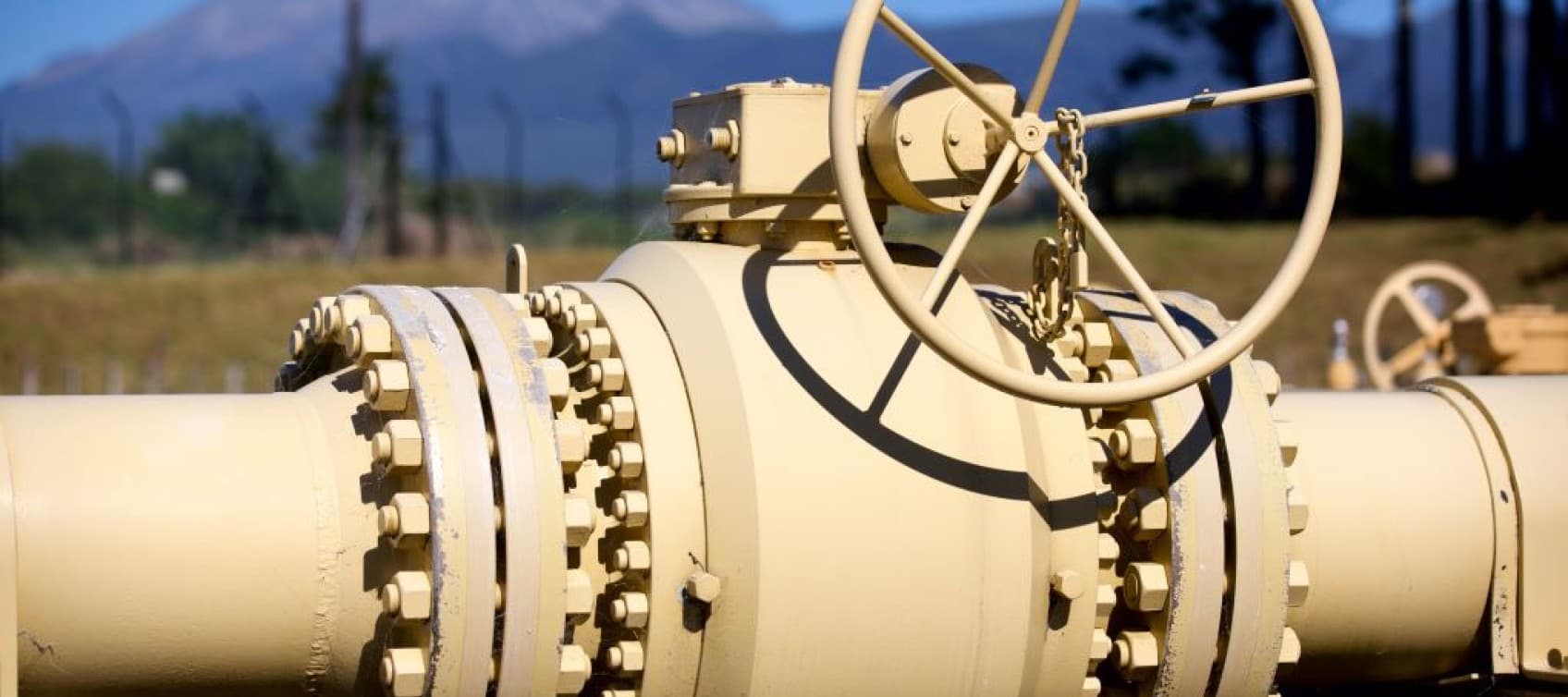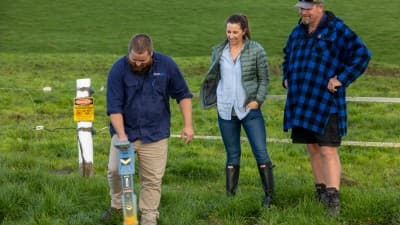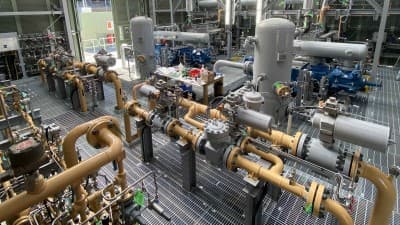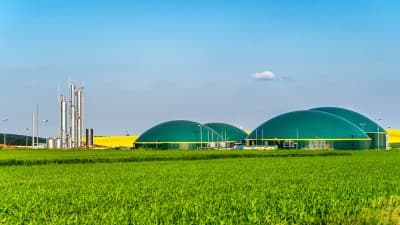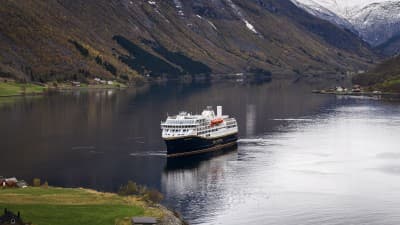Ever wondered how energy moves through pipelines to your home?
Based in the energy-rich region of Taranaki, Clarus company Firstgas connects natural gas to homes, businesses and large industry across the North Island. Firstgas is responsible for the ongoing reliability and safe operation of the approximately 2,500 km of high-pressure gas transmission pipelines, including the Māui and Kapuni pipelines.
This network provides steady and reliable energy for around 300,000 households and 15,000 businesses across the North Island. When you turn on your cooktop, shower, or heating, the gas is there, ready to use, when you need it.
But how does gas get from Taranaki, where it’s produced, all the way to your home? We spoke to Vaughan Astwood, Systems Operations Manager at Firstgas, about the process of transporting gas across the North Island, Te Ika-a-Māui.
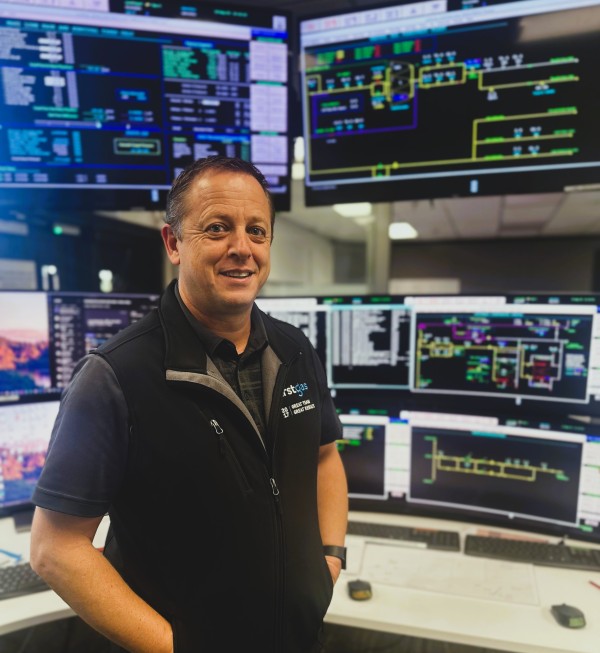
Vaughan Astwood at the helm in the Firstgas Control room
Lets start with where natural gas came from
Almost all the natural gas in the Firstgas pipelines is extracted in Taranaki, from both offshore fields like Maui and Kupe, and onshore fields like Kapuni and Mangahewa. Once extracted, the gas is processed to make sure it meets New Zealand gas standards. This means all the gas meets a consistent specification, so it works seamlessly for every application.
“We don’t own the gas, but it's our job to transport it between the producers and users”
Once processed, the gas is compressed and injected into the Firstgas network. Sometimes natural gas is also put into storage at the Ahuroa Gas Storage Facility in Taranaki and can be extracted back out later for use when periods of peak electricity generation is required, for example.
“We don’t own the gas, but it's our job to transport it between the producers and users,” explains Astwood. “Think about a trucking company that takes parcels from a supplier and delivers them to the customer, for a fee. Firstgas does a similar job with gas – we transport it from the producers to the customers, and we charge a fee for moving it through our pipeline network.”
To help move the gas long distances, sometimes an extra compressor in the network helps it along, he adds. “Sending gas from New Plymouth to Wellington, for instance, it has to go a long way in a skinny pipeline, so we also have the Kaitoke Compressor site halfway down to give it an extra push.”
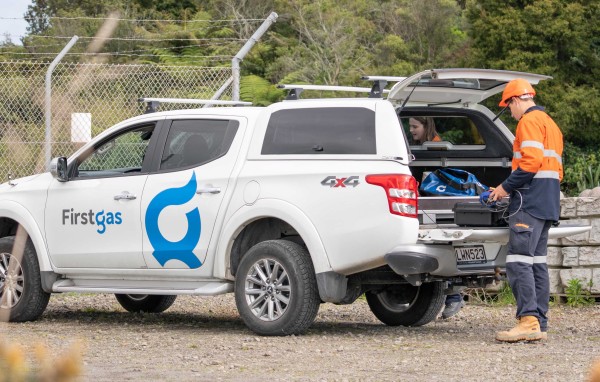
Firstgas Station
Local networks deliver the gas to homes and businesses
The Firstgas network comprises of approximately 2,500km of high-pressure transmission pipelines, which transports natural gas to various cities and towns for use by industrial users, businesses, hospitals, restaurants and homes in the North Island.
When the gas reaches a gas gate (like a grid exit point on the electricity national grid), it is reduced in pressure and moves into a local distribution network. There are a number of gas distributors who have their own local networks connecting to people’s homes and workplaces. Firstgas is also a distributor, with 4,800km of distribution networks in Northland, Waikato, Bay of Plenty, Gisborne and Kapiti (you can see maps of our pipeline network here).
“The gas is transported to a town via the transmission pipelines, and at a gas gate we drop the pressure so the distributor can then distribute it to gas customers on behalf of their retailer,” says Astwood. “Just like with the electricity sector, there’s different companies that produce, transmit, distribute and then retail your gas. There’s a lot of companies that have more than one role in the supply chain, so it does get a bit complex.
“Managing the commercial requirements of the gas transmission operations, with the actual day-to-day operation of the transmission assets, is a big part of Astwood and his team’s job. He says it can be tricky to explain even to those in the industry!”.
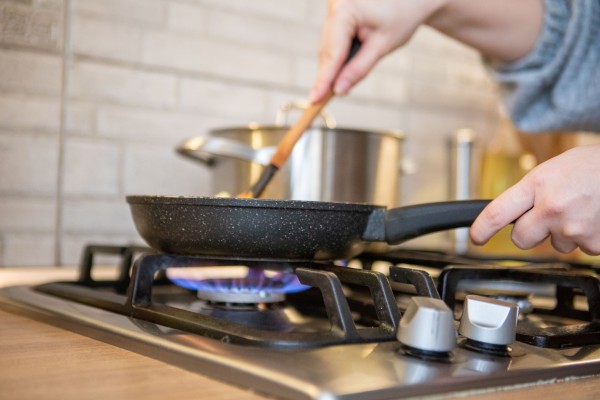
Source: iStock image used for illustrative purposes only. Not an actual representation of a Clarus business.
Blending renewable gas in our network
The gas network currently transports natural gas. But Astwood explains that in the future the pipeline could become an important tool in decarbonising New Zealand’s energy system.
“Because the gas pipeline is already in place, it could be used to transport a mixture of both natural gas and renewable gases including biomethane and possibly hydrogen in the future, with projects already underway.”
First Renewables, also part of Clarus, has developed the capability to upgrade biogas into biomethane and flow into a Firstgas pipeline. Later this year, Firstgas, with partners Nova Energy, Powerco, Vector and Gas Net are planning to pilot a blend of hydrogen and natural gas in the Te Horo network, to test the feasibility of existing pipeline infrastructure to transport hydrogen.
You can read learn about how Firstgas is supporting the transition to a net carbon zero New Zealand, visit Future of Gas.

